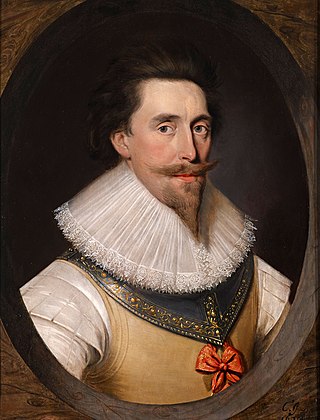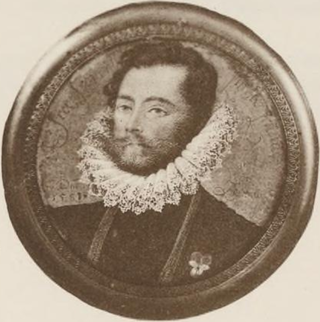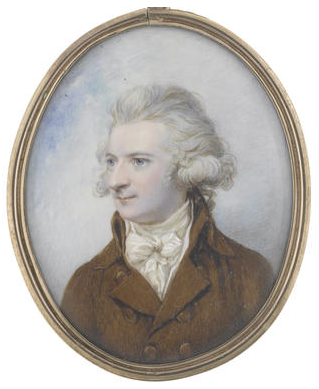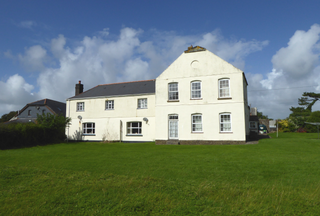
Clovelly Court is a privately owned country house in Clovelly, Devon. The house and adjacent stable block are Grade II listed buildings. [1] The gardens and parts of the estate are open to the public.

Clovelly Court is a privately owned country house in Clovelly, Devon. The house and adjacent stable block are Grade II listed buildings. [1] The gardens and parts of the estate are open to the public.
The manor of Clovelly was for over 600 years owned by the Cary family but in 1738 the estate was sold to locally born Lincoln's Inn lawyer Zachary Hamlyn (1677-1759). He rebuilt the old manor house in 1740, but this was burnt down in 1789 and rebuilt in the Gothic style by his successor. On his death he left the property to his great-nephew James Hammet (1735–1811) who changed his name to Hamlyn. He married Arabella Williams, a Carmarthenshire heiress, and was created a baronet in 1795 (see Hamlyn-Williams baronets). In that year he carried out substantial improvements to the house.
The 4,600-acre [2] estate passed on the death of the 3rd and last baronet in 1861 to his son Neville and then following his early death to the baronet's eldest daughter Susan Hester Hamlyn-Williams who married Henry Fane, creating the Hamlyn-Fane family.
The house and estate remain in the family and are managed by the Hon. John Rous (born 1950), great-great-grandson of Susan Hester Hamlyn-Fane, great-grandson of Prime Minister H. H. Asquith and son of the 5th Earl of Stradbroke.
The parish church of Clovelly, dedicated to All Saints, is located immediately to the west of the manor house, and thus at a considerable distance from the village of Clovelly. It contains many mural monuments and monumental brasses to the Cary family, longtime lords of the manor, and to their successors the Hamlyns and Hamlyn-Fanes. Most of the stained glass windows are 19th century, but some small fragments of ancient stained glass are set into the north chancel window, displaying the arms of Berkeley and Newburgh Earl of Warwick (without the ermine cheveron). [3]

Clovelly is a privately owned harbour village in the Torridge district of Devon, England. The settlement and surrounding land belongs to John Rous who inherited it from his mother in 1983. He belongs to the Hamlyn family who have managed the village since 1738.

The Cary family is an English aristocratic family with a branch in Ireland. The earliest known ancestor of the family is Sir Adam de Kari who was living in 1198. Sir John Cary purchased the Manor of Clovelly in the 14th century and established the family's status as members of the landed gentry. Various branches of the family were ennobled in the late 16th and early 17th centuries as Baron Hunsdon and Viscount Falkland.

Arlington was a manor, and is a village and civil parish in the North Devon district of Devon in England. The parish includes the villages of Arlington and Arlington Beccott. The population of the parish is 98.

Henry de Beaumont, 5th Earl of Warwick, Earl of Warwick, and by marriage Lord of Hocknorton and Hedenton (Headington) in Oxfordshire, was the son of Waleran de Beaumont, 4th Earl of Warwick and Margaret de Bohun. He was also known as Henry de Newburgh.

Francis Fane, 1st Earl of Westmorland, of Mereworth in Kent and of Apethorpe in Northamptonshire was an English landowner and politician who sat in the House of Commons between 1601 and 1624 and then was raised to the Peerage as Earl of Westmorland.
Fane is an English surname of Welsh origins that belongs to a family who have produced a number of notable members. The family originated with Ivon Vane, who was a Welsh landowner and mercenary captain in the service of the Black Prince. Ivon Vane or John Fane, as he was known in English, was one of three captains who captured King John II of France at the battle of Poitiers 1356. He was knighted and shared in the ransom monies, which made him very wealthy. He settled in Kent and founded the two notable families of Fane, whose members became the Earls of Westmoreland, and Vane, who became the Earls of Darlington. Both families have golden gauntlets on their crest in memory of the surrender of King John.

Sopley is a village and civil parish situated in the New Forest National Park of Hampshire, England. It lies on the old main road from Christchurch to Ringwood, on the east bank of the River Avon. The parish extends east as far as Thorny Hill and borders the parishes of Bransgore and Burton to the south and west respectively. It lies down the road from a small hamlet called Ripley. It includes the hamlets of Shirley, Avon and Ripley. The area is mainly rural with less than 300 dwellings.
Lieutenant-Colonel Henry Edward Hamlyn-Fane, known as Henry Fane until 1861, was a British soldier and Conservative politician.

Sir George Carey, JP, DL, of Cockington in the parish of Tor Mohun in Devon, England, was Lord Deputy of Ireland from May 1603 to February 1604.

The Hamlyn, later Hamlyn-Williams Baronetcy, of Clovelly Court in the County of Devon and of Edwinsford in the County of Carmarthen, was a title in the Baronetage of Great Britain. It was created on 7 July 1795 for James Hamlyn, heir of his great-uncle Zachary Hamlyn (1677-1759) of Clovelly. This coat of arms was one of the many of the Hamlin/Hamelin family, and was transmitted from John de Hameline, knight of Leicester, who served under King Edward I, A. D. 1272 to 1307.

Tapeley is a historic estate in the parish of Westleigh in North Devon, England.

Robert Incledon (1676–1758) of Pilton House, Pilton, near Barnstaple in North Devon, was a lawyer of New Inn, London, a Clerk of the Peace for Devon, Deputy Recorder of Barnstaple and was twice Mayor of Barnstaple, in 1712 and 1721. In 1713 as mayor he supervised the building of the Mercantile Exchange on Barnstaple Quay, as recorded on the building by a contemporary brass plaque and sculpture of his armorials. He built Pilton House in 1746.

Sir James Hamlyn, 1st Baronet (1735–1811) of Clovelly Court in Devon, and of Edwinsford, Carmarthenshire, Wales, was a Member of Parliament (MP) for Carmarthen 1793–1802. He served as Sheriff of Devon in 1767–8. He was created a baronet in 1795. He not only inherited a large estate in Devon from his wealthy childless great-uncle, but also married a wealthy Welsh heiress.

Avon Tyrrell is an historic manor within the parish of Sopley, Hampshire. It is situated within the New Forest, near Christchurch. The present manor house was built in 1891 by John Manners-Sutton, 3rd Baron Manners (1852–1927).

Zachary Hamlyn (1677–1759), of Clovelly and Woolfardisworthy, three miles south-east of Clovelly, Devon, was a lawyer of Lincoln's Inn and thought to be the first Clerk of the Journals of the House of Commons. He made a large fortune and in 1738 purchased the manor of Clovelly from the last of the Cary family, longtime lords of the manor, and made Clovelly Court his residence.

Sir Robert Spencer "of Spencer Combe" in the parish of Crediton, Devon, was the husband of Eleanor Beaufort (1431–1501), the daughter of Edmund Beaufort, 2nd Duke of Somerset (1406–1455), KG, and was father to two daughters and co-heiresses who made notable marriages.
The Manor of Clovelly is a historic manor in North Devon, England. Within the manor are situated the manor house known as Clovelly Court, the parish church of All Saints, and the famous picturesque fishing village of Clovelly. The parish church is unusually well-filled with well-preserved monuments to the lords of the manor, of the families of Cary, Hamlyn, Fane, Manners and Asquith. In 2015 the Rous family, direct descendants via several female lines of Zachary Hamlyn (1677–1759) the only purchaser of Clovelly since the 14th century, still own the estate or former manor, amounting to about 2,000 acres, including Clovelly Court and the advowson of the parish church, and the village of Clovelly, run as a major tourist attraction with annual paying visitor numbers of about 200,000.

Yeo Vale is an historic estate in the parish of Alwington in North Devon, England. The grade II listed mansion house known as Yeo Vale House, situated 1 mile east of Alwington Church and 3 miles south-west of Bideford, incorporating a 15th-century gatehouse, was demolished in 1973, having been abandoned as a residence in 1938 and having fallen into a dilapidated state. it was situated in the valley of the River Yeo, a small river flowing into the River Torridge immediately above Bideford. The barton or farmhouse survives, to which was attached the mansion house, together with various out-buildings and stone walls. A private mediaeval chapel was formerly attached to the mansion house and in the early 18th century was demolished and rebuilt as a folly on a hill about 1/4 mile south of the mansion house. It survives today as a ruin overgrown with trees and ivy.

Tor Mohun is a historic manor and parish on the south coast of Devon, now superseded by the Victorian sea-side resort of Torquay and known as Tormohun, an area within that town. In 1876 the Local Board of Health obtained the sanction of Government to alter the name of the district from Tormoham (sic) to Torquay.

Webbery is an historic manor in the parish of Alverdiscott in North Devon, England.